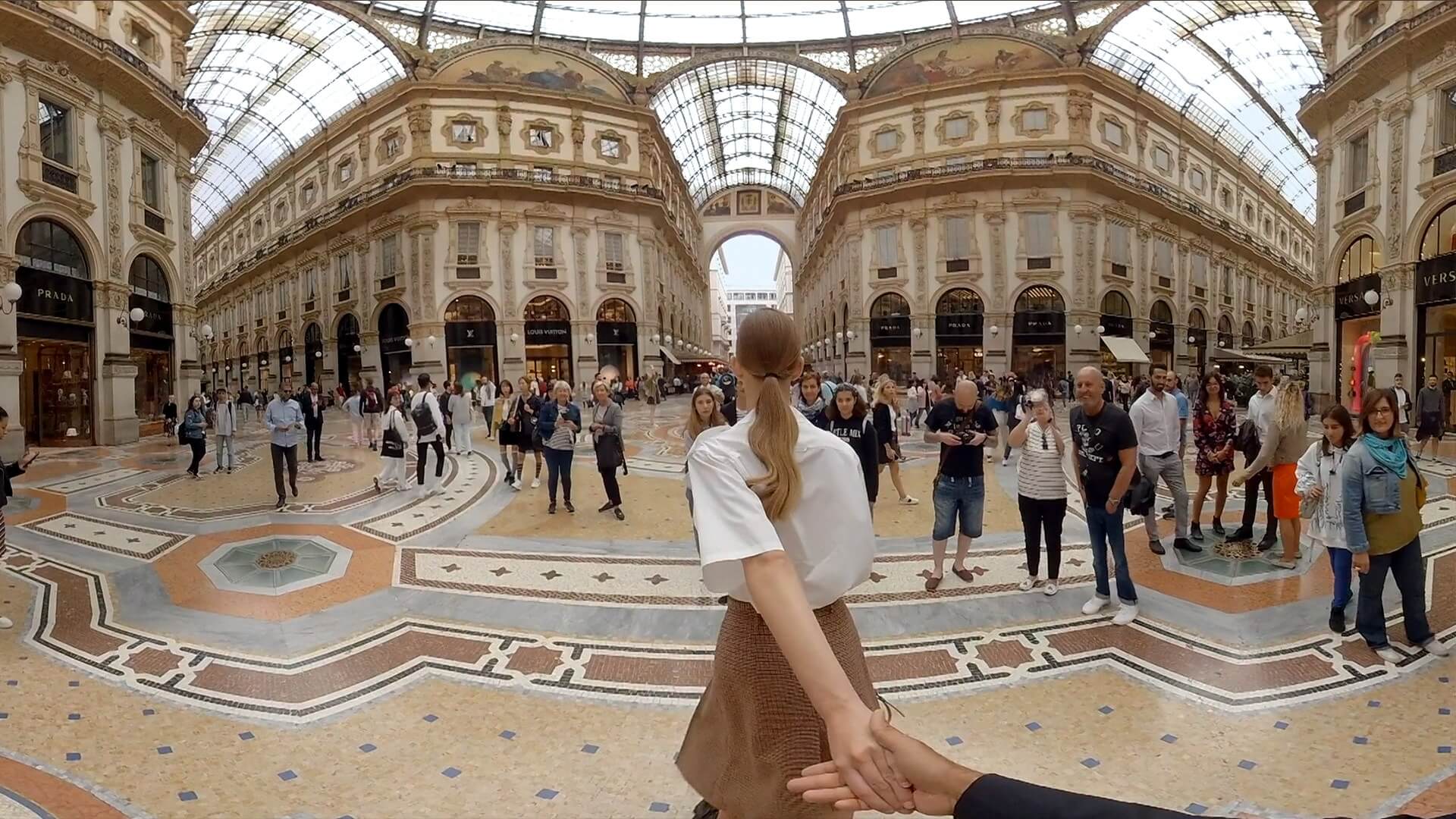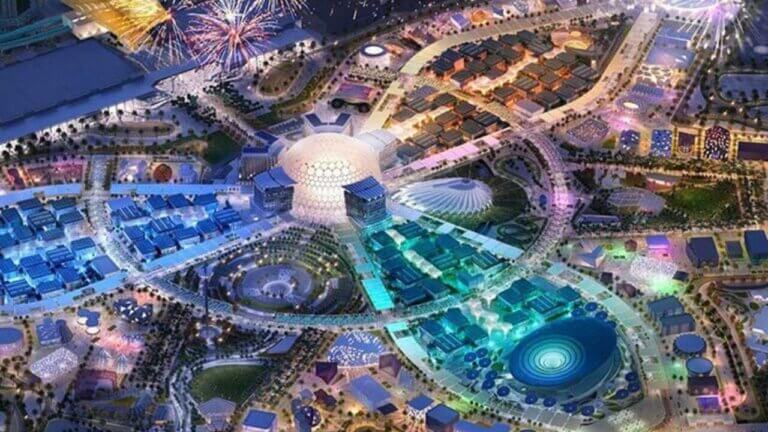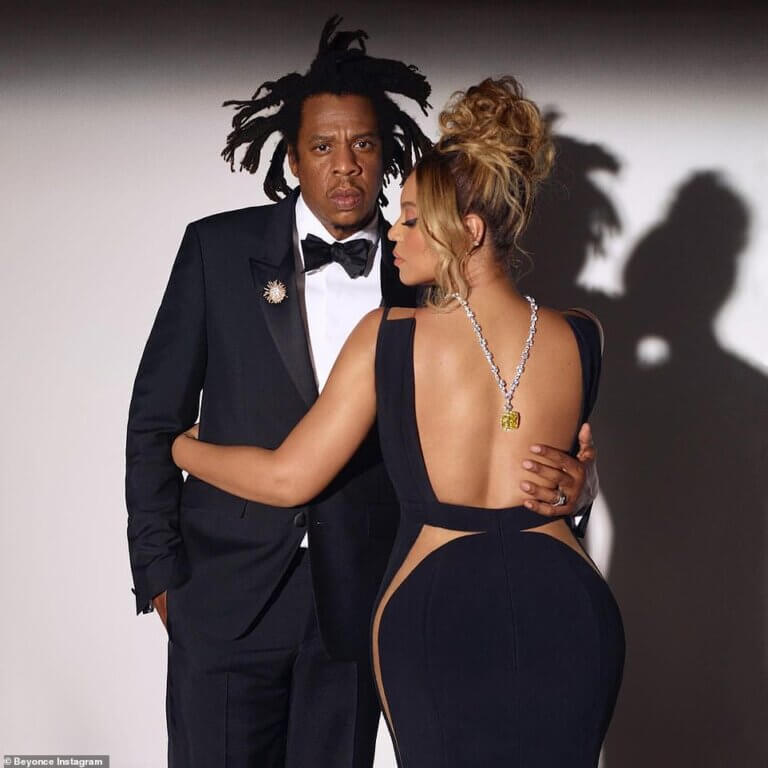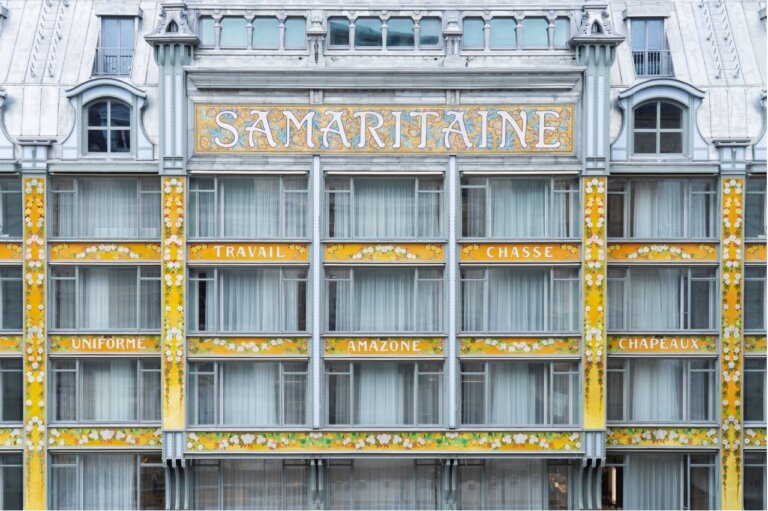Luxury retail has been left on pause in the wake of Covid-19, but the pandemic has been an accelerating catalyst for digital e-commerce adoption in the sector.
The two over-riding luxury market trends in 2020 were the continued rise of HNW Chinese consumers – Millennials and Gen Z shoppers seeing the most growth – as well as luxury fashion brands upping the ante across digital channels as a means to adopt global e-commerce sales, while the pandemic limited physical sales.
“The turmoil of Covid-19 has been a catalyst for change for the luxury industry,” Bain & Co’s recent study finds. The luxury research barometer reports mainland China was the only region to show market growth of 45% year on year. Furthermore, the firm says online sales constituted €49bn of global luxury revenues in 2020, up almost half compared with 2019. The proportion of sales made online nearly doubled to 23% and Bain believes that digital will become the main channel for luxury purchases by 2025.
As per this projection, a number of luxury houses have reported surging online sales in the last quarter of 2020; luxury is finally catching up on digital sales.
Mainly fuelled by Gen Z and Millennials, these luxury sales have been aided by more virtual shopping opportunities as brands turn to livestreaming, augmented reality (AR) and virtual in-store services to reach global online audiences.
The global AR market for retail and marketing is expected to surpass $12bn in 2025, according to February 2021 estimates from tech market advisory firm ABI Research. New for 2021, both big luxury names and independent boutiques are launching new frictionless retail services, with e-commerce a driving force for innovation.
Virtual flagships
Over the last year, Dior, Gucci and Prada have all launched virtual reality shopping platforms to reach luxury customers at home.
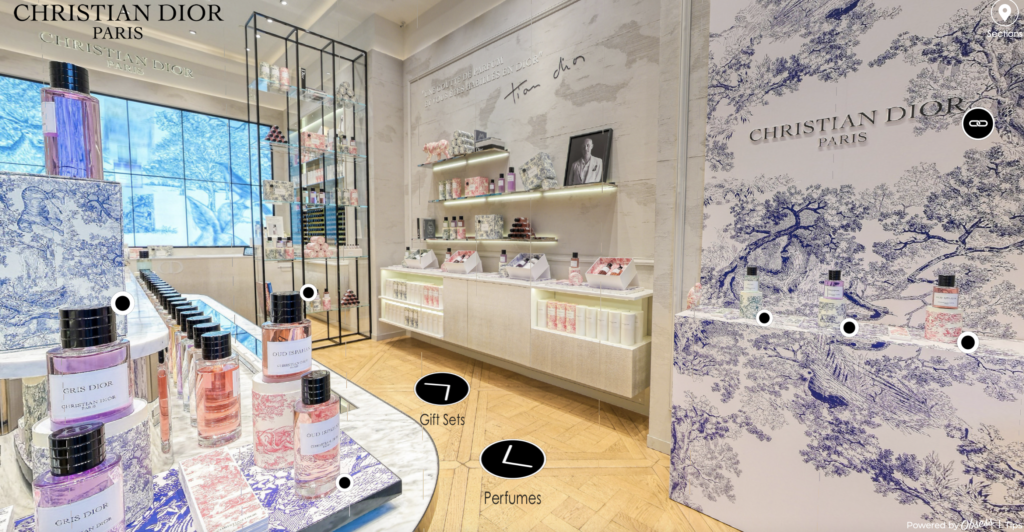
Dior has launched a 360 degree 3D virtual beauty store for its Maison Christian Dior Fragrances collection. Customers can take a virtual tour making use of the high definition ‘in-store’ photography and make online purchases across the brand’s increasingly expansive fragrances, bath & body collection and gift sets.
Dior’s online store was developed with Obsess, a virtual reality software specialist that says its brief was to share its Paris store with a wide audience that would not have had the chance to see it in Paris. Obsess founder and CEO Neha Singh tells Glossy that the virtual store is designed to target younger demographics who are consumers of esports and gaming, “they’re so used to this interface; they already understand how it works.” But it’s important for luxury brands to retain a high-end retail aesthetic for their virtual stores, in order to preserve their brand prestige, says Singh.
Prada’s adoption of virtual reality shopping brings the luxury brand’s range of digital content into customers’ homes via social channels as well as its own website live streams.
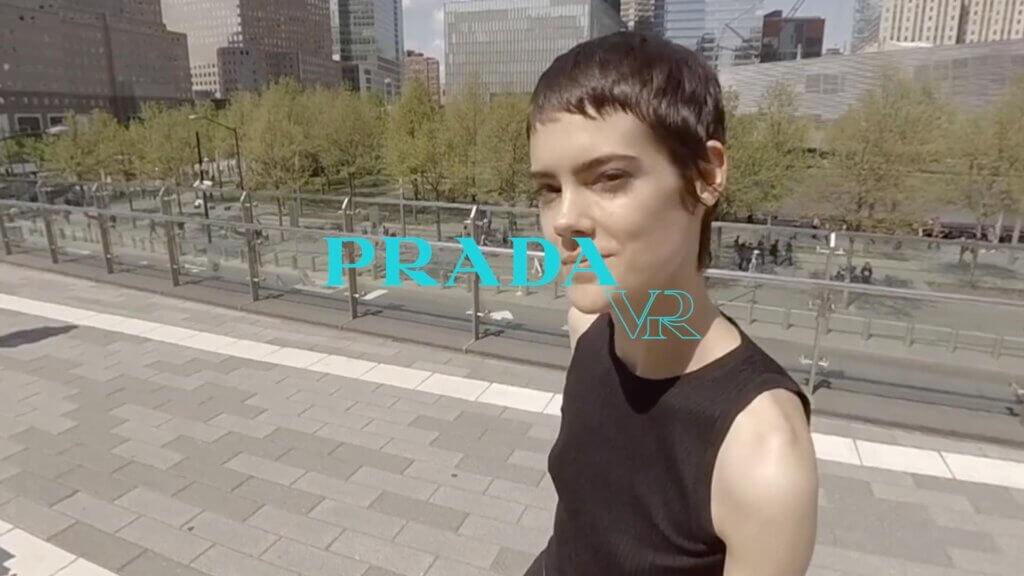
The Prada Virtual Reality project is the extenstion of an existing retail initiative – initially intended to enhance the customer experience at events and in-store, which offers clients around the world, VR content using VR headsets to view through several platforms, including YouTube VR, VEER, Oculus and Youku.
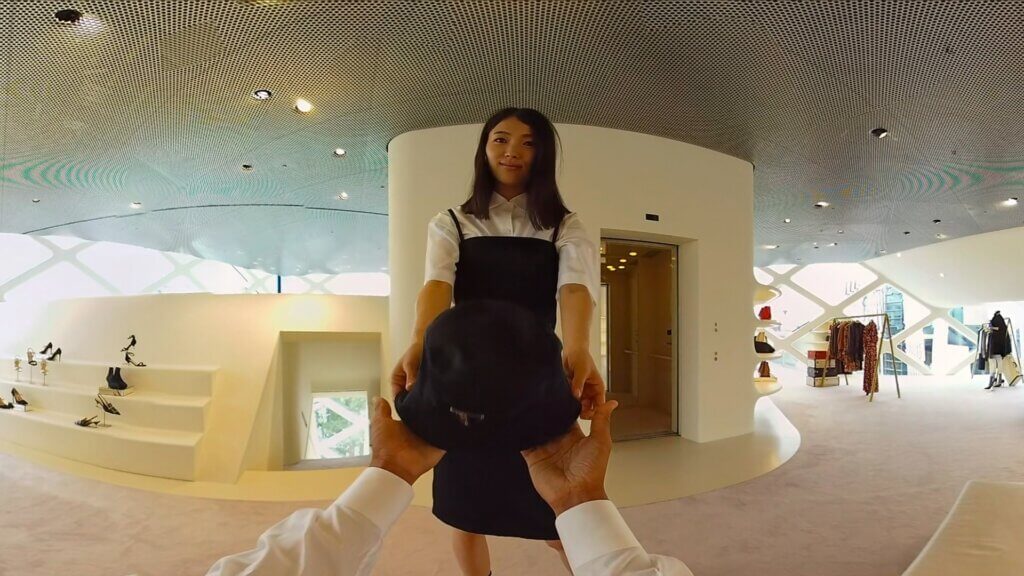
Prada’s approach to virtual reality engagement is an immersive journey, that takes online customers on a tour of the brand’s flagship stores in Tokyo, New York and Los Angeles as well as the Fondazione Prada in Milan and Venice. Using its virtual reality technology, users can also take a closer look at the latest Prada runway collection to discover the secrets of the Made to Measure project.
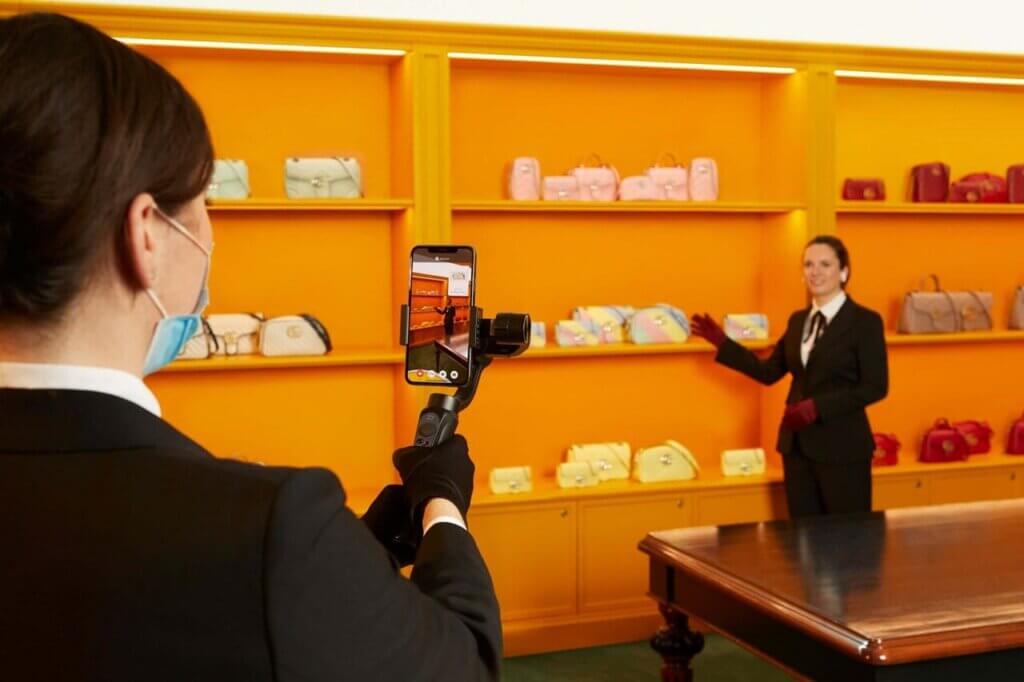
Gucci has launched a virtual shopping service as an extension of its in-store VIP personal shopping service, allowing customers to communicate with staff via video calls in a specially designed store.
The new Gucci Live service allows customers to chat with the brand’s personal shoppers in real time, from a purpose-built ‘remote clienting’ store in Florence, dubbed Gucci 9.
This concept store location was designed for staff to showcase products in a high-tech store environment complete with brightly lit merchandise shelves and high-quality cameras able to shoot at close range from several angles.
The Gucci 9 store service has been tested in Europe, Africa and the Middle East and the company plans to roll it out to customers in New York, Tokyo, Singapore, Sydney and Shanghai and dedicate more staff as the new locations come on board.
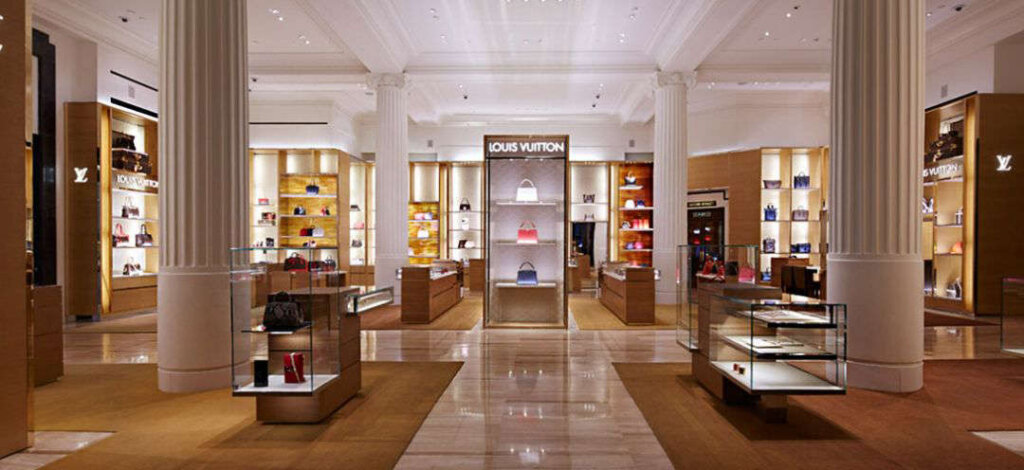
Selfridges is offering exclusive access to its luxury brand stores for Bvlgari, Celine, Dior, Louis Vuitton and Tiffany & Co with bookable appointments that allow customers to get up close and personal with their wishlist products. New to the virtual boutique repertoire is Pangaia, launching next month.
Value Retail has reinvented its luxury outlet stores with a number of virtual shopping experiences at its Bicester Village (UK) and Fidenza Village (Italy) locations. Customers can make personal shopping appointments with concierge sales specialists for store tours via Zoom or Whatsapp video calls.
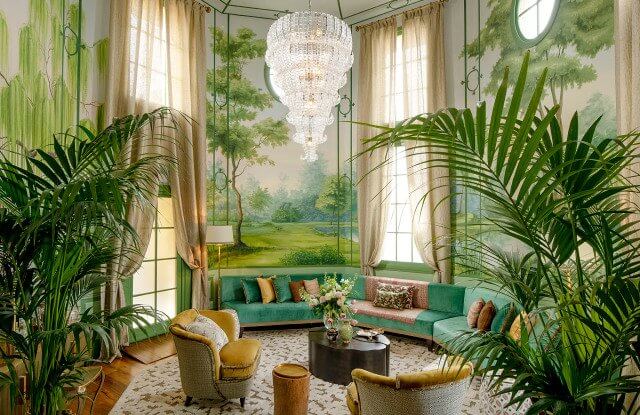
At Fidenza Village in Milan, Desirée Bollier, chair and chief merchant officer of Value Retail says it wanted to further develop relationships with luxury brands to ensure global luxury shoppers would choose to shop there virtually, within private sales and virtual event spaces. So, she partnered with interior designer David Thomas to redesign the VIP lounges as an Apartment with a number of themed rooms – each of these can be used for private events, online or offline.
Bollier tells WWD, it was key to continue to engage with customers, hence the development of virtual shopping. This allowed Fidenza Village to attract “a very strong pool of luxury consumers who would generally be traveling around the world but who were obliged to stay home.”
Virtual experiences
While many of these examples are virtual extensions of physical stores, a number of brands have reimagined their flagship stores as truly virtual experiences.
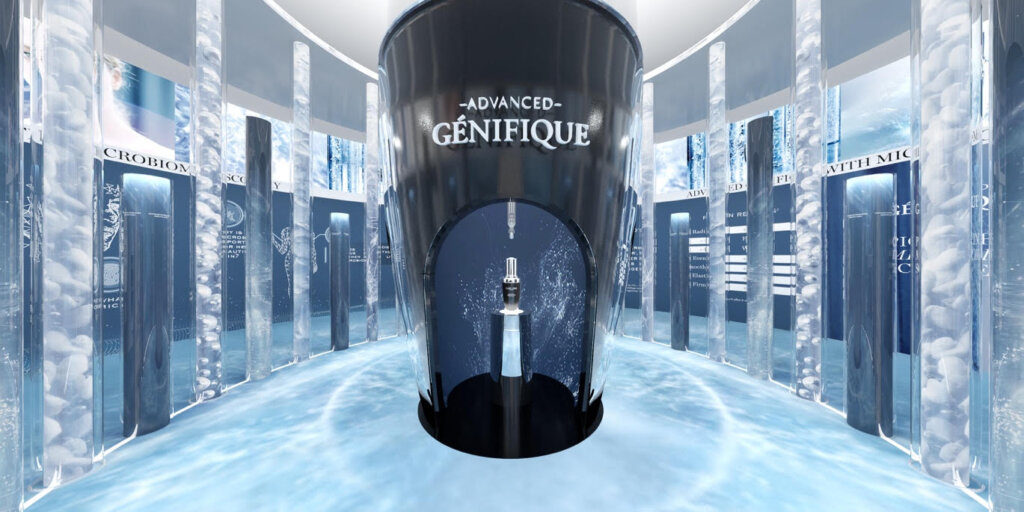
Lancôme tested the virtual retail water with the ‘opening’ of its first Lancôme Advanced Génifique Virtual Flagship in Singapore in September 2020.
A global first for the beauty brand, the online store was designed to marry digital engagement with physical experience. Visitors could find a range of one-to-one customer service tutorials accessible by chat bots and click-through zones within the virtual store. According to the brand notes, Lancôme wanted to provide an ‘immersive’ 3D shopping experience in a virtual space that brings the store close to shoppers from the comfort of their homes.
Each visitor could redeem a seven-day Lancôme Advanced Génifique trial kit at the virtual flagship store – located via a global URL that clicked through to five exploratory personality zones (Discover, Explore, Inspire, Live and Shop). Each one was designed to encourage visitors to discover their own strengths and traits as per the brand’s #LiveYourStrength ad campaign.
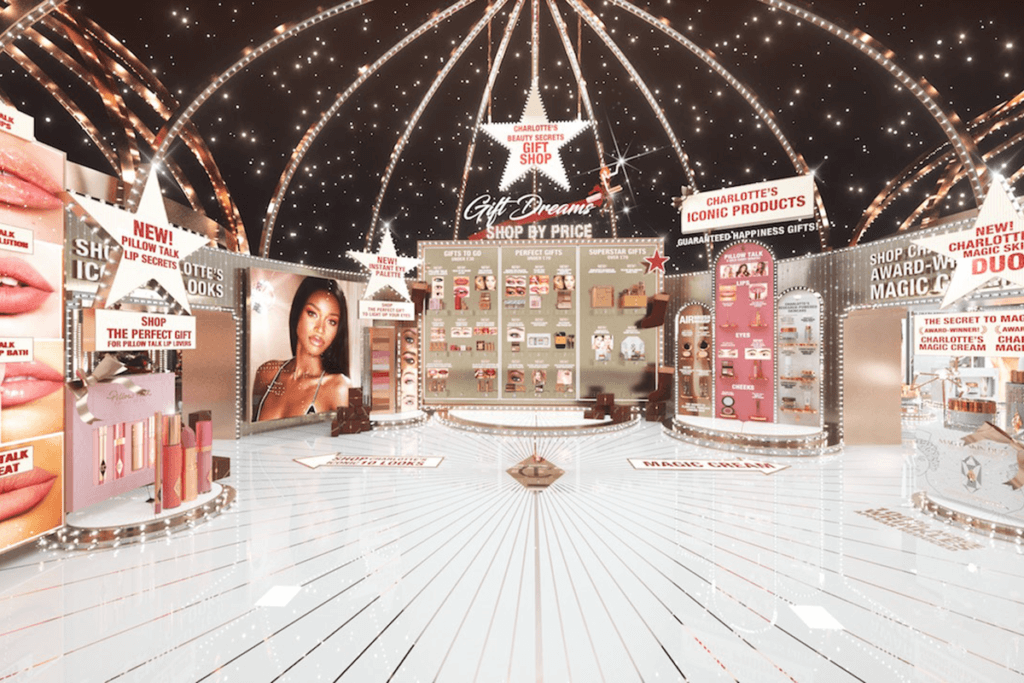
Another luxury virtual beauty experience is now on offer from Charlotte Tilbury who opened an online ‘flagship’ store in November 2020, where shoppers can browse through virtual rooms, guided by an avatar of the eponymous brand owner and A-list make-up artist.
Alongside products displayed on 3D beauty counters, the store integrates AR-powered makeup try-ons and video tutorials that have been available at the brand’s physical store locations for the last three years.
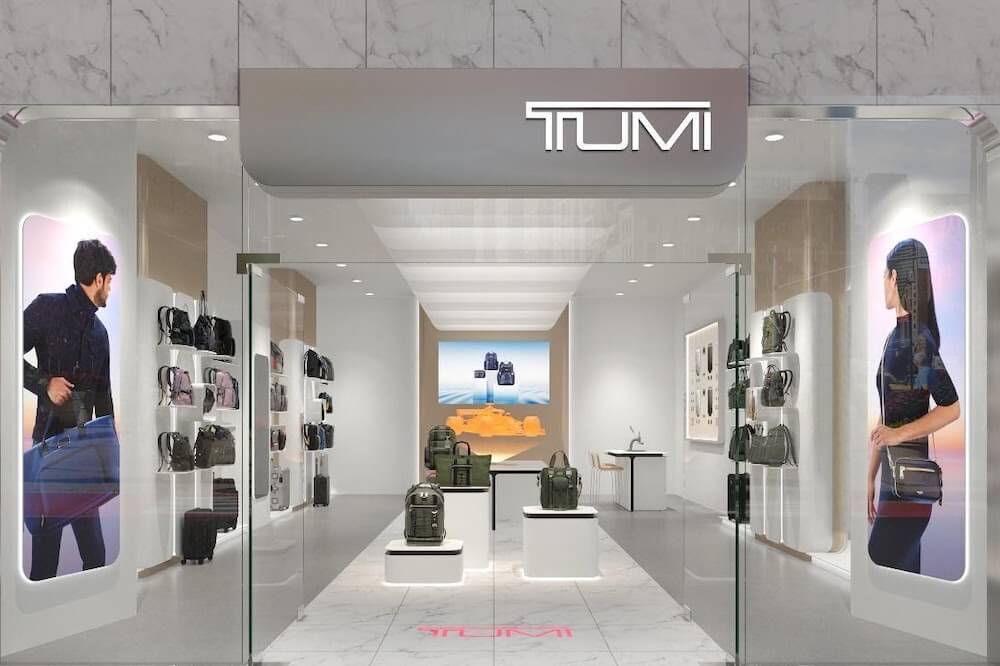
Luggage brand Tumi has invested in its first virtual store that ‘opened’ in February. The 360-degree 3D environment encourage visitors to browse, navigate different departments, chat to sales associates via chat bots and test-drive products. The interaction with key product styles is possible via an AR function that places life-sized suitcase renderings on user devices, so they can see their size in their own homes. “We wanted to create an environment that is as close as possible to the actual physical store experience—and make it better,” Adam Hershman, Vice President of TUMI Asia Pacific and Middle East, tells Retail in Asia.
Echolution takeout: As luxury brands have stepped up their focus on virtual retail, consumers have adapted quickly to the new frictionless way of shopping without travel.
As we can see from an Echolution case study campaign (below) for Selfridges that targeted Middle Eastern luxury customers, engagement levels for targeted mobile ads performed the best. 72.5% of ad impressions were in view, with 38.9% in view for 15 seconds or more.
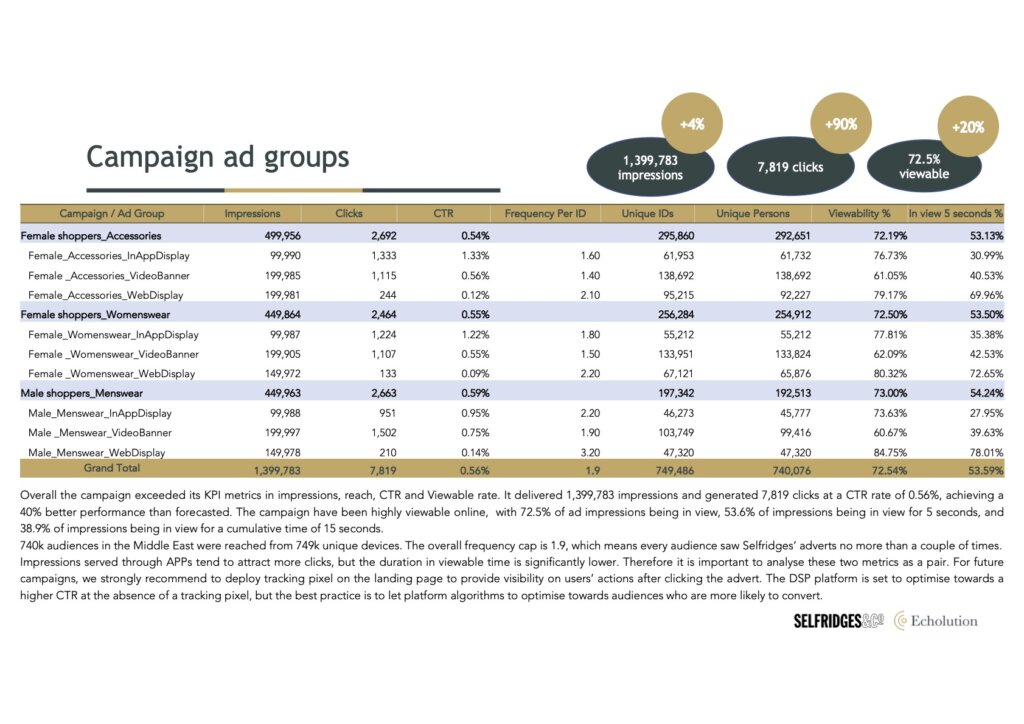
As per the example from Value Retail’s Italian outpost, Fidenza Village, with a new luxury retail concept comes new luxury marketing opportunities. Consumers have pent up demand for luxury shopping and a virtual store tour is the next best thing while international travel is still on pause.
Now is the time for retailers to target luxury shoppers with call-to-action messaging and new reasons to ‘visit’ a virtual flagship and take a tour via a concierge service. By using the right branded data partners to provide a niche demographic portfolio, there is a compelling argument to make conversion sales via virtual channels. Just like in a physical store, Echolution now works with luxury retailers to target ideal shopper groups, driving traffic to online stores via accurate programmatic advertising.

